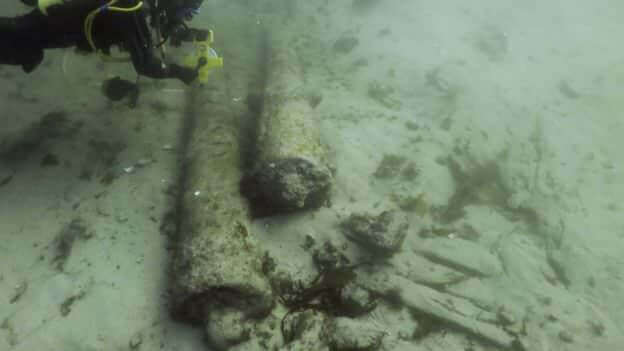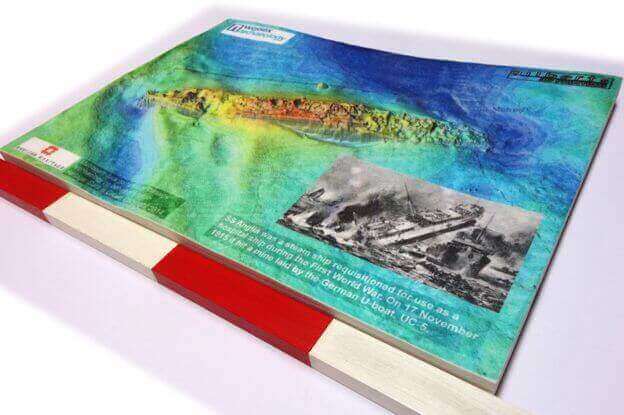Shipwrecks found in UK waters are two of the world’s first underwater archaeological sites to be recreated using a 3D printer.
Wessex Archaeology is a British archaeological institute which has been using 3D printing to reconstruct two shipwreck sites found off the British coast.
The prints include a full color model of a wreck near Drumbeg, in Sutherland, which lies at a depth of 12m (39ft) in Eddrachillis Bay and is thought to date back from the late 17th or early 18th century.
In the 1990s, two local scallop divers discovered the wreck and archaeologists first began taking surveys in 2012 on behalf of Historic Environment Scotland.
Archaeologists are still trying to confirm the identity of this wreck, but Wessex Archaeology said one “intriguing possibility” is that it is a Dutch trading vessel called the Crowned Raven.
The second print is of HMHS Anglia, a World War One hospital ship lost off Folkestone in Kent in 1915.
The ship was carrying wounded UK military personnel from Calais to Dover when it struck a mine laid by a German U-boat and it sank within 15 minutes taking 160 lives with it.
Archaeologist John McCarthy, who undertook the 3D modeling of the sites, said: “We are very excited about the potential for this technology to help us to show the wider community what it’s like to visit the site without having to learn to dive or even get your feet wet.”

How were the Shipwrecks Recreated?
Wessex Archaeology worked with several 3D printing firms in England and Scotland after investigating and scanning the underwater sites.
Photogrammetry was the technique which was used in order for archaeologists to be able to capture the 3D shape of the wreckage. By using this technique, they were also able to capture the color and texture of the features too.
However, since 2012 different surveys have been done using sonar and magnetometer sensors and for the HMHS Anglia a sonar technique called multi-beam was used.
In addition, in 2014 a high resolution 3D sonar survey of the site was carried out by Wessex Archaeology on behalf of Historic England.
In order to decide the color of the second model, historical information like contemporary illustrations were used. McCarthy said: “It’s been a fascinating process to transform the light captured in the photographs and the sound captured by the sonar sensors back into solid objects through the 3D printing process.”
The main benefit of using 3D printing to reach previously inaccessible sites is that it can give archaeologists a huge amount of information.
McCarthy added: ”We hope that future surveys by our team can result in more models which can be used in local and national museum displays and at talks and open days.”
(Source: BBC News)
License: The text of "Historic Shipwrecks Recreated with 3D Printing" by All3DP is licensed under a Creative Commons Attribution 4.0 International License.
